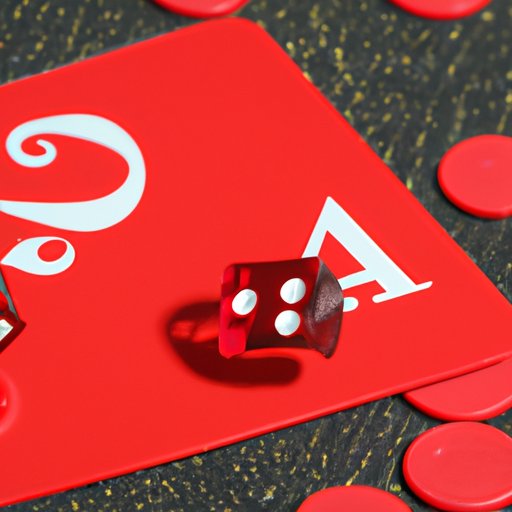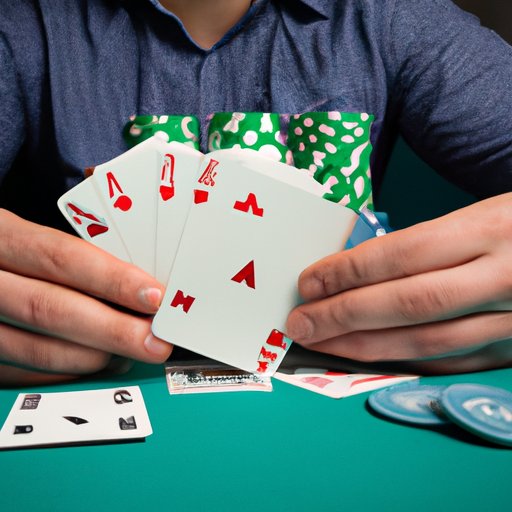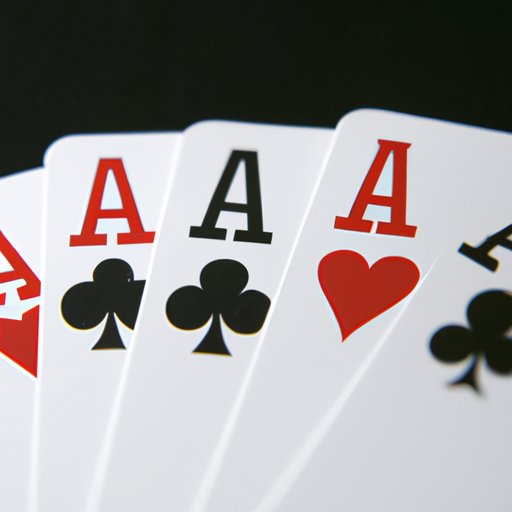Introduction
Have you ever watched those professional gamblers win big at the casino and wonder what their secret is? Well, one of their secrets may be card counting. Card counting is a technique used by gamblers to gain an advantage over the casino and increase their chances of winning. In this ultimate guide, we aim to provide you with a comprehensive understanding of what card counting is, how it works in casinos, and how you can master the art of card counting for a profitable casino visit.
Demystifying Card Counting: What Is It and How Does It Work in Casinos?
Card counting is a technique used by professional and skilled gamblers to keep track of which cards have been dealt and which ones are still in the deck. By doing so, they can determine the likelihood of receiving certain cards and adjust their bets accordingly. This technique is used primarily in blackjack, but it can also be applied to other card games.
When playing blackjack, each card has a specific value assigned to it. Cards two through ten have their face value, while Jacks, Queens, and Kings are worth ten points each. Aces, on the other hand, can either be counted as one or eleven points, depending on the player’s preference.
By keeping track of which cards have already been dealt, a skilled card counter can determine the remaining cards’ relative value in the deck. If there is a high proportion of high-valued cards remaining in the deck, the player has a higher chance of winning. In contrast, if there are more low-valued cards remaining, the player has a higher chance of losing and may bet less or leave the table.

The Science Behind Card Counting: How to Beat the Odds in a Casino
The mathematics behind card counting is relatively straightforward. The critical factor is determining the ratio of high-valued cards to low-valued cards remaining in the deck. Once a skilled card counter determines this ratio, they can adjust their bets accordingly. The higher the ratio of high-valued cards, the more the player should bet.
To be successful at card counting, gamblers must understand the importance of probability. The odds of receiving certain cards adjust with each draw, resulting in a continually evolving probability. Professional gamblers keep track of these changing probabilities and adjust their bets accordingly.
There are a few rules to remember when using card counting. First and foremost, never let the casino staff see you counting cards. While it is not illegal, casinos view it as cheating and will ask you to leave if they catch you. It’s also essential to avoid overbetting or underbetting, as either can quickly lead to ruin. Suppose the count is in your favor. In that case, you should increase your bets, while if the count is against you, you should decrease your bets.
Winning Big at the Casino: Understanding the Art of Card Counting
Winning big through card counting requires more than just a good understanding of the mathematics behind it. It also requires the right mindset and certain skills.
One mindset that is essential for successful card counting is discipline. A disciplined gambler knows when to walk away from the table and when to stay. It’s critical to have a plan in place and stick to it, whether it’s a winning or losing session.
There are a few tips that skilled card counters use to improve their abilities. One is to practice card counting at home before attempting it in a casino. There are various apps and websites available that can help you practice. Another tip is to use a team approach to card counting. By working with other skilled gamblers, you can increase your chances of success.
Example scenarios demonstrating how to apply card counting in a casino:
- Suppose the running count is +15, and there are four decks left in the shoe. This means that there are around 60 high-valued cards left in the deck, making it an ideal time to increase your bet.
- Suppose the running count is -5, and there is only one deck left in the shoe. There are only a few high-valued cards left, so it’s better to bet less to minimize losses.
- Suppose the running count is around +8, and the dealer is showing a low card, like a four or a five. This is an excellent opportunity to double down and increase your bet, as there is a higher chance of receiving a high-valued card.

Mastering Card Counting for a Profitable Casino Visit
Effective card counting requires preparation before visiting the casino. It’s essential to have a thorough understanding of the technique to avoid mistakes that can lead to significant losses.
Before attempting card counting in a casino, practice at home and ensure that you understand the mathematics behind it. Additionally, it’s essential to determine your bankroll and set a loss limit. This will help you avoid overbetting and ensure that you don’t lose too much money.
Finally, it’s important to know the dos and don’ts of card counting. Do keep track of the running count, adjust your bets accordingly, and stay within your bankroll restrictions. Don’t let the casino staff see you counting cards, bet too high or too low, or get greedy and stay at the table for too long.
Conclusion
Card counting is a technique that enables skilled gamblers to beat the odds at a casino. By keeping track of the cards that have been dealt, they can determine the remaining deck’s value and adjust their bets accordingly. However, card counting requires discipline, practice, and a thorough understanding of the mathematics behind it. We encourage readers to try out card counting in a responsible and ethical manner, and to remember to have fun while doing so.
